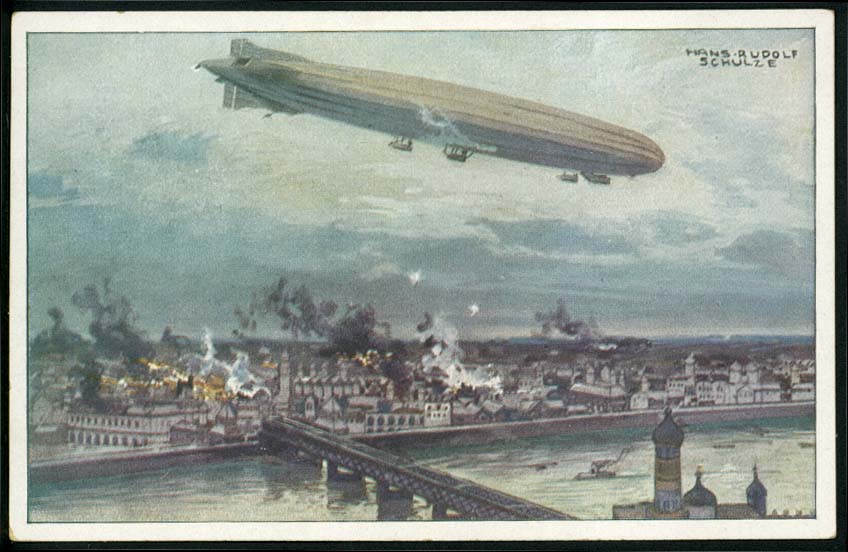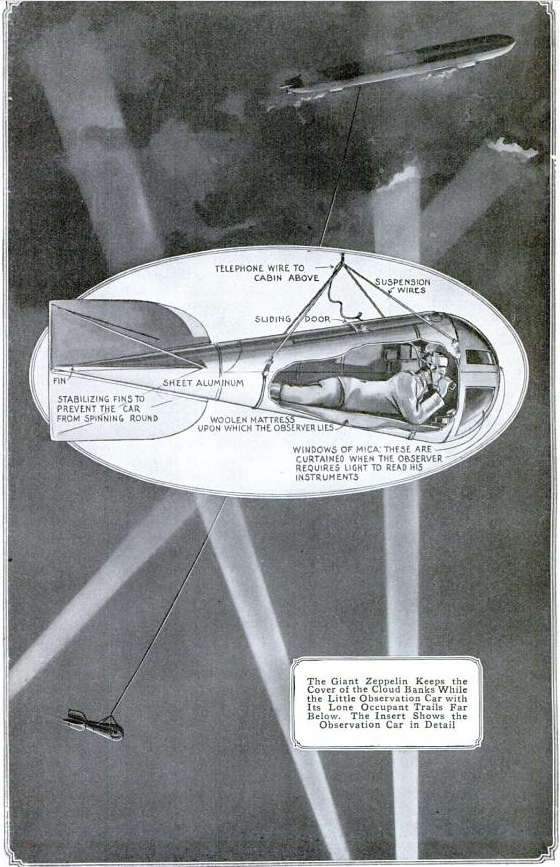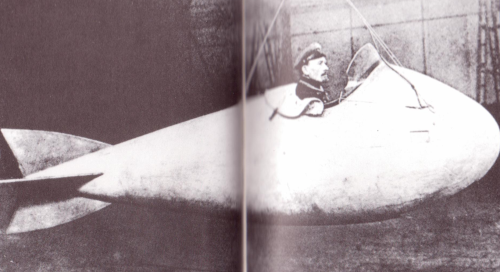Close Encounter of the Zeppelin Kind July 10, 2014
Author: Beach Combing | in : Contemporary , trackbackIn the 1960s, date unspecified, a southern English paper the Hackney and Kingsland Gazette published the following letter, a memoir from one Mr S.C. Thomas, who had lived in the area in the First World War. His memories had taken him back to October 1916 when he and Hilda Cavanagh had gone out for a walk on Hackney Marshes on the edges of London at night. Presumably they were courting.
Hearing a swishing, droning sound, we looked up and saw a Zeppelin right over our heads at the [sic] height of 100 feet. Orders were barked out, a clanking sound and from about 40 feet from the rear a light showed. A basket was lowered, hit the ground ten feet from us, toppled over and a tall man got out. He looked all around, saw us and came to us, and asked the way to Silvertown in perfect English. I told him to follow the Lea towing path till he came to Bow. He had either one eye or a patch and carried a long parcel wrapped in black canvas. The basket was wound up and the Zepp pointed its nose upwards and went away at a very fast speed. Meanwhile searchlights madly fanned the sky searching for it. I went to Hackney Police and told them, but was laughed at. If any other persons were on the Marshes then perhaps… they will verify my account of a German landing in London.
This appears in James Hayward’s excellent Myths and Legends of the First World War: thanks Mike! There are several difficulties with the passage: first, no Zeppelins are reported in this area at this time; second, Zeppelins stayed as high as possible because otherwise they were sitting ducks for Allied planes; third, the chat between Mr Thomas and the German spy beggar belief: ‘yes, yes, down and to the left and if you want to kill the Mayor he is in the big building across the square.’ But, accepting that this is a tall story, it is pleasing how it conforms with a series of medieval and nineteenth-century American legends about flying ships letting down anchors and men descending: nevermind all the UFO malarkey. The question must be this: did Zeppelins ever lower baskets? Drbeachcombing AT yahoo DOT com There is a British news story from Essex, 9 October 1916, where an Essex man (Hackney Marshes is Essex) and observes a destroyed Zepplin with a basket and speculates as to what it was for: lowering men for observation or for ‘descent on the water’?
10 July 2014: Two emails this morning. Mike Dash writes in: Zeppelins certainly did have observation cars, which in their earliest form actually were baskets equipped with a wicker chair, chart table and lightning conductor, but later became aerodynamically-shaped “fish”. There were lowered from the airship by wire, and a 4.3m long example, salvaged from the LZ90 in September 1916, still hangs in the Imperial War Museum. These cars were manned by one person and had a telephone link to the mother ship. The idea was to allow navigation while maximising the security of the Zeppelin itself, which could hover safely above the cloud base, invisible to searchlights and anti-aircraft guns, while still steering towards her target. For this reason, they were known to Zeppelin men as “sub-clouds”. According to Ernst Lehmann – a rare survivor among senior Zeppelin men who went on to command the Hindenburg after the war – the cars could descend as much as half a mile below the ship. In his work The Zeppelins, Lehmann recalls the great Zep ace Peter Strasser nearly coming to grief in one: “Abpit 300 feet down, while the winch was allowing the cable to unwind slowly but steadily, the tail of the car became entangled with the wireless aerial. It caught the car and tilted it upside down. The cable meanwhile continued unwinding from the winch above and was beginning to dangle in a slack loop below Strasser, who only saved himself from being tipped out by clinging to the sides of the car with a deathlike grip. Suddenly the aerial gave way, sending the car and Strasser plunging down until it brought up at the end of its own cable with a sickening jolt. It was not a propitious introduction for the new device.” Despite these dangers, however, were always volunteers to man the sub-cloud – it was the one place on a Zeppelin where smoking was permitted. I am attaching a plate from Popular Mechanics, January 1917, that gives a good idea of how the advanced sub-clouds worked.’ Thanks Mike!
Then Borky: Ah here’s the real curiosity tho’ three months after Chuckles Marshwalker saw his phantasmal Zeppelin the Silvertown Explosion occurred when the munitions fact’ry blew up killin’ 73 an’ injurin’ hundreds more. Have you just started not so much an early Mothman as an early Moth Eaten Man meme?’ Thanks both!





